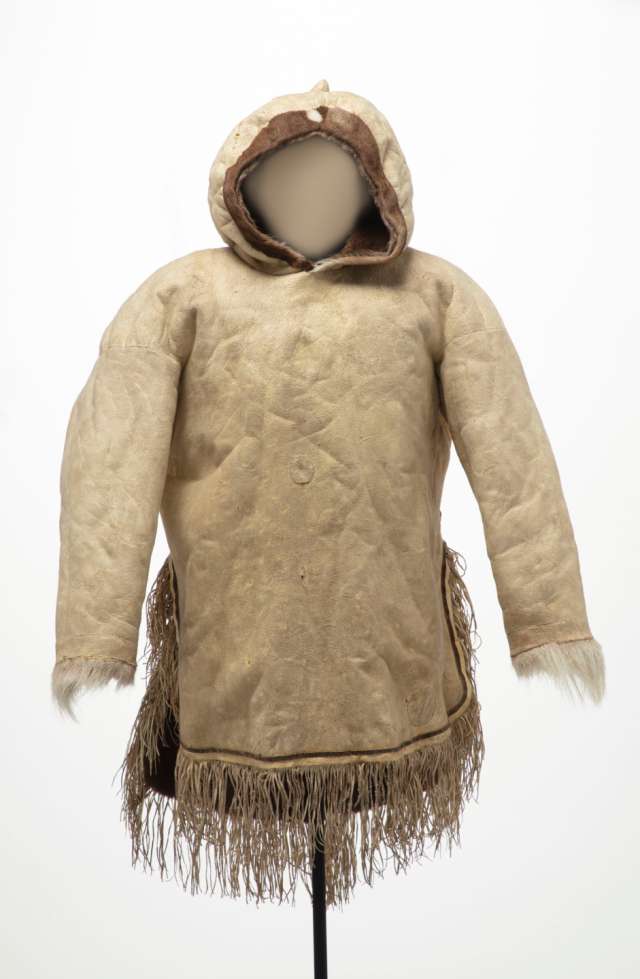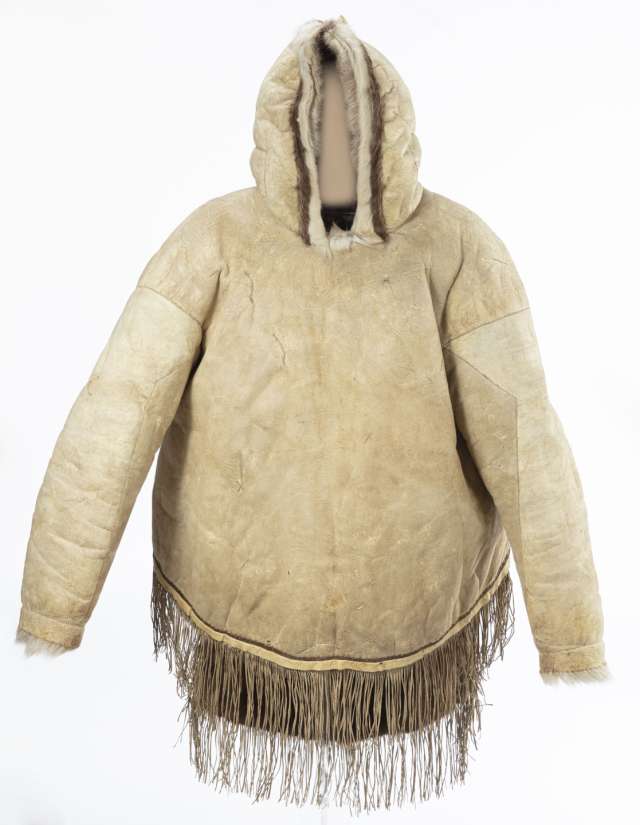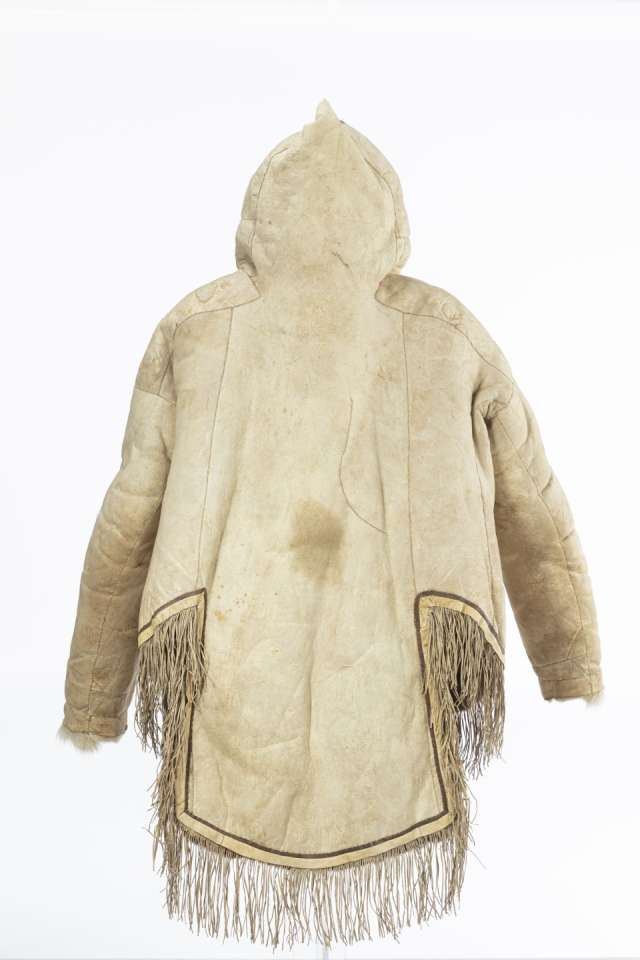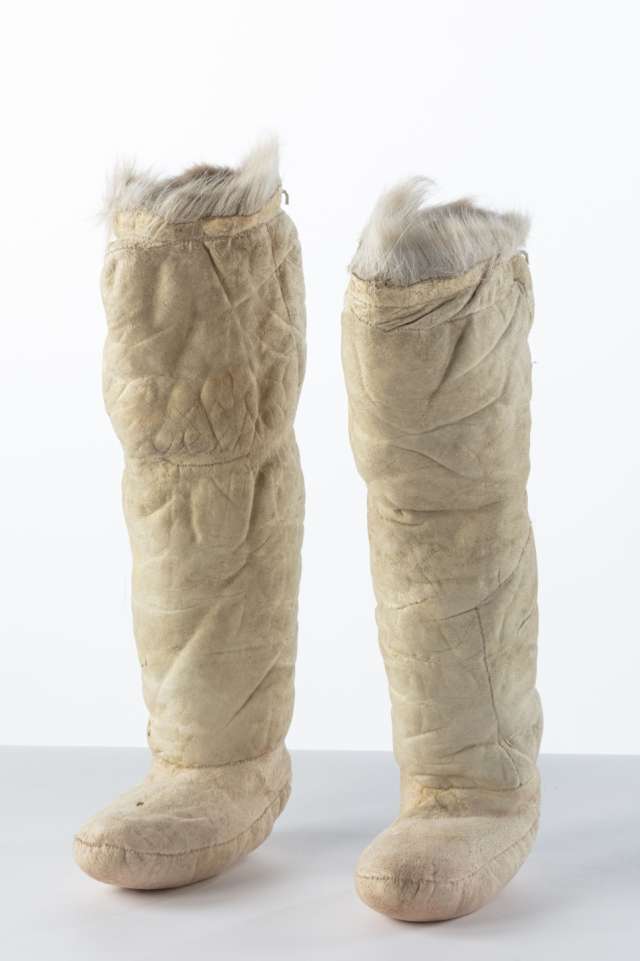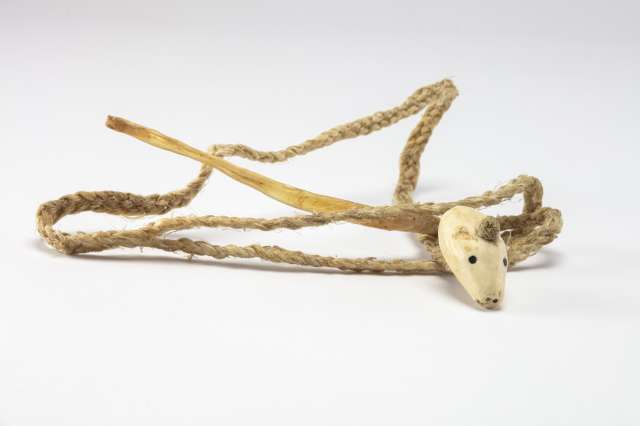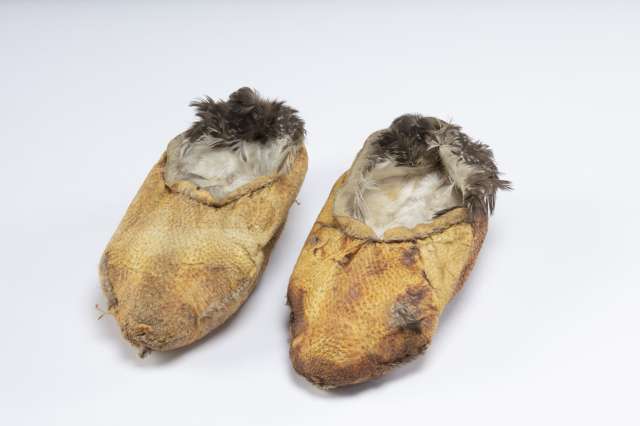Men's parkas (atigi)
These two caribou-skin parkas were worn with the fur on the inside and the subcutaneous fat on the outside. Used as an inner garment, this kind of parka (named an atigi) was worn year-round by men. In summer, it was worn by itself, while in winter it was covered by a qulittaq, a coat with the fur on the outside. The sleeve cuffs were insulated with long white fur from a caribou's neck. The fringes on the parka hem provided protection from the wind.
Qiqpaujaatuq atigi
This parka was especially suitable for hunters, whose movements were made easier by the slits going down to the mid-hip. This special feature gave the parka its name, Qiqpaujaatuq atigi, which means "atigi whose sides are cut."
Akutuinnaq atigi
This parka was better insulated because it let less air come in and go out through the sides. It was appropriate for men with a less active lifestyle. The coat's square-cut coattail, akuq, gave this special model of atigi its name.
According to elders and hunters, these parkas are no longer worn in the Igloolik region. They've been replaced with inner garments made of synthetic fabrics. Our interviewees nonetheless said that a caribou-skin atigi is ideal for hunting because it keeps the body at a more stable temperature than today's insulated jackets.

